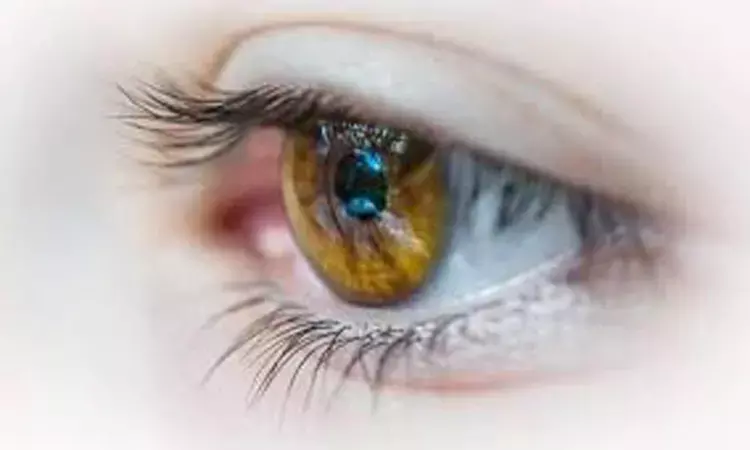- Home
- Medical news & Guidelines
- Anesthesiology
- Cardiology and CTVS
- Critical Care
- Dentistry
- Dermatology
- Diabetes and Endocrinology
- ENT
- Gastroenterology
- Medicine
- Nephrology
- Neurology
- Obstretics-Gynaecology
- Oncology
- Ophthalmology
- Orthopaedics
- Pediatrics-Neonatology
- Psychiatry
- Pulmonology
- Radiology
- Surgery
- Urology
- Laboratory Medicine
- Diet
- Nursing
- Paramedical
- Physiotherapy
- Health news
- Fact Check
- Bone Health Fact Check
- Brain Health Fact Check
- Cancer Related Fact Check
- Child Care Fact Check
- Dental and oral health fact check
- Diabetes and metabolic health fact check
- Diet and Nutrition Fact Check
- Eye and ENT Care Fact Check
- Fitness fact check
- Gut health fact check
- Heart health fact check
- Kidney health fact check
- Medical education fact check
- Men's health fact check
- Respiratory fact check
- Skin and hair care fact check
- Vaccine and Immunization fact check
- Women's health fact check
- AYUSH
- State News
- Andaman and Nicobar Islands
- Andhra Pradesh
- Arunachal Pradesh
- Assam
- Bihar
- Chandigarh
- Chattisgarh
- Dadra and Nagar Haveli
- Daman and Diu
- Delhi
- Goa
- Gujarat
- Haryana
- Himachal Pradesh
- Jammu & Kashmir
- Jharkhand
- Karnataka
- Kerala
- Ladakh
- Lakshadweep
- Madhya Pradesh
- Maharashtra
- Manipur
- Meghalaya
- Mizoram
- Nagaland
- Odisha
- Puducherry
- Punjab
- Rajasthan
- Sikkim
- Tamil Nadu
- Telangana
- Tripura
- Uttar Pradesh
- Uttrakhand
- West Bengal
- Medical Education
- Industry
Brolucizumab noninferior to aflibercept in improving visual acuity in age-related macular degeneration

USA: Visual acuity outcomes in participants previously treated with neovascular age-related macular degeneration (n-AMD) and persistent retinal fluid receiving brolucizumab 6 mg every 4 weeks were not inferior to aflibercept 2 mg administered every 4 weeks, with resolution higher surgery, says a study published in Ophthalmology.
This study was performed by Arshad M Khanani and his team To evaluate the 52-week efficacy and safety of brolucizumab 6 mg administered every 4 weeks (q4w) compared with aflibercept 2 mg dosed every 4 days in the eye with nAMD and persistent retinal fluid.
This study was a randomized, double-blind, multicenter phase 3a study in which participants had persistent AMD (residual retinal fluid that persists despite regular treatment). previously with anti-molecular endothelial growth factor) were included in the trial. The intervention in this study was the eye, randomized (2:1) to receive intra-gastric brolucizumab 6 mg or aflibercept 2 mg every 4 weeks up to and including week 100.
The primary endpoint was analytic equal magnitude of mean change for best-corrected visual acuity Week 52 (margin: 4 letters). Other important endpoints included change in central subfield thickness (CST) from baseline to week 52, fluid-free status (no intracerebral fluid [IRF], and absence of underlying fluid). urethral [SRF]) and safety status.
The key findings of this study were as follows:
1. At 52 weeks, brolucizumab was not inferior to aflibercept in change from baseline in BCVA (least mean difference 0.6 ETDRS letters).
2. Stabilization or improvement of vision (no worse than 5 letters BCVA loss) occurred at a comparable, as did an increase of ≥15, ≥10 and ≥5 letters (brolucizumab: 16.9%, 22.3%, and 35.8%, respectively; aflibercept: 17.4%, 20.2%, and 31.5%, respectively).
3. A total of 4.8% and 1.7% of participants reported a letter loss of ≥15 BCVA from baseline at week 52 in the brolucizumab and aflibercept groups, respectively.
4. In the eyes treated with brolucizumab compared with those treated with aflibercept, CST was significantly reduced (P < 0.001) and the percentage of fluid-free eyes was significantly higher at week 52 (40.4% brolucizumab vs. 19.0 ± libercept; 95% CI: 13.9 (29.0; P < 0.001)
5. The incidence of intraocular inflammation (IIO), including retinal vasculitis and retinal vascular occlusion, was 9, respectively. .3% (0.8% and 2.0%) for brolucizumab compared with 4.5% (0% and 0%) for aflibercept.
Reference:
Khanani, A. M., Brown, D. M., Jaffe, G. J., Wykoff, C. C., Adiguzel, E., Wong, R., Meng, X., & Heier, J. S. (2022). MERLIN: Phase 3a, Multicenter, Randomized, Double-Masked Trial of Brolucizumab in Participants With nAMD and Persistent Retinal Fluid. In Ophthalmology. Elsevier BV. https://doi.org/10.1016/j.ophtha.2022.04.028
Neuroscience Masters graduate
Jacinthlyn Sylvia, a Neuroscience Master's graduate from Chennai has worked extensively in deciphering the neurobiology of cognition and motor control in aging. She also has spread-out exposure to Neurosurgery from her Bachelor’s. She is currently involved in active Neuro-Oncology research. She is an upcoming neuroscientist with a fiery passion for writing. Her news cover at Medical Dialogues feature recent discoveries and updates from the healthcare and biomedical research fields. She can be reached at editorial@medicaldialogues.in
Dr Kamal Kant Kohli-MBBS, DTCD- a chest specialist with more than 30 years of practice and a flair for writing clinical articles, Dr Kamal Kant Kohli joined Medical Dialogues as a Chief Editor of Medical News. Besides writing articles, as an editor, he proofreads and verifies all the medical content published on Medical Dialogues including those coming from journals, studies,medical conferences,guidelines etc. Email: drkohli@medicaldialogues.in. Contact no. 011-43720751


